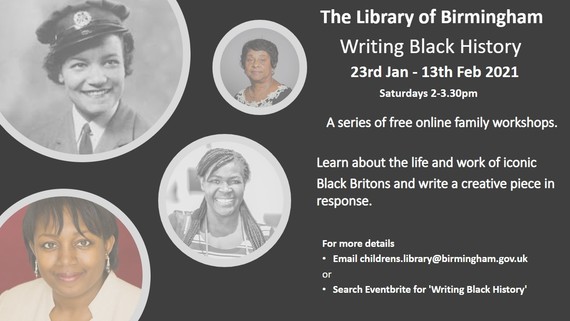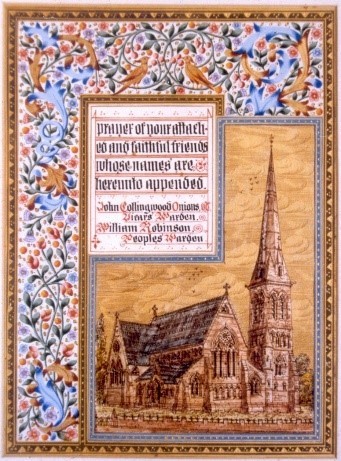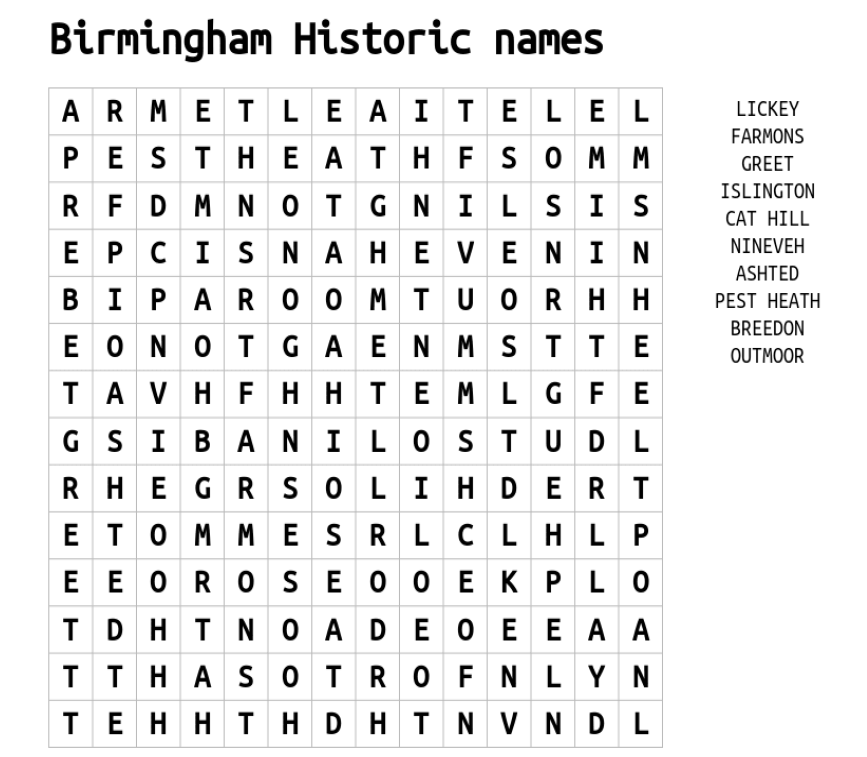|
January 2021
It's 2021! This year we hope to bring you many more updates about our activities, projects, collections and services - whether physical or digital!
In addition to another wonderful jigsaw (an engine drawing no less) and a brain-teasing word puzzle to keep you busy, this month's features include an update on our Children's 'Writing Black History' workshops and a guest piece about the bombing of St. Mary's Church, Acocks Green! Naturally we've had to include an item on new year's resolutions... so we'll start there...
As the festivities of Christmas and celebrations of the New Year have drawn to a close, many people give up drinking alcohol for the month, in what has recently become known as ‘Dry January’. The annual campaign promotes the many health benefits of abstaining, in turn highlighting the negative impacts. There have been many organisations in history which have promoted moderation and abstinence in the use of alcohol, most notably The Temperance movement which arose at the beginning of the 19th century. Did you know that one of the first British temperance societies was formed in Birmingham?
 The Birmingham Temperance Society was founded in 1830, acting as a movement against the widespread, destructive drinking of the time. Death rates greatly outnumbered birth rates, with ill heath, crime and poverty prevalent. During the 1820’s, alcohol usage was widespread among all social classes, if not more so among the social groups who could least afford it. Water, when it was accessible, was unsafe and so alcoholic beverages became a primary thirst quencher, even administered by hospitals to patients.
Initially, they did not promote total abstinence, rather objecting to the abuse of hard, potent spirits that were rife at the time, deeming the social use of beer and ciders acceptable, and seen as ‘temperance drinks’. Later on, a vow of total abstinence of any alcoholic drink was adopted by the movement.
William Collins, founding publisher of Collins, Sons & Co. Ltd. and temperance activist, arrived in Birmingham on business, and was disturbed by the heavy drinking of strong spirits prevalent within the ‘Gin Palaces’ of the time. He voiced his concerns during a meeting held on August 30th, 1830, in the Offices of the Mendicity Society which was attended by leading businessmen and Churchmen of the time. The suggestion of forming a Temperance Society was welcomed, and following the signing of a declaration, The Birmingham Temperance Society was formed.
The core beliefs and ideologies of the society are printed in ‘A Manual for Temperance Societies’ [Ref. LS 11/8/28/63233] along with the standard pledge, which all members would sign up to... you can find out more in this blog written by one of Archives Assistants!
 At the Library of Birmingham Children's Library we are continuing our 'Writing Black History' events with a series of online family workshops! Do you know any 12-17 year olds that would like to take part?
Over four Saturdays, from 23rd January 2021, we'll be looking at the lives and work of space scientist Maggie Aderin-Pocock, author Malorie Blackman, activist Doreen Lawrence, and aircraftwoman Lilian Bader.
At the end of each session, participants will have learned about an iconic black Briton, other famous Britons in their field, and started writing a creative response to a major incident in their life.
You can sign up for as many sessions as you want. To register, email childrens.library@birmingham.gov.uk or search for 'Writing Black History' on Eventbrite.
We look forward to seeing you!
Birmingham Children's Library.
Just over eighty years ago, in December 1940, St. Mary’s church in Acocks Green was bombed. Revd. Kelly wrote later about what happened...

“The bomb crashed through the roof at 8.20 p.m., and exploded just in front of the lectern. A large hole in the floor showed the impact. How truly they built our church in the past is shown by the fact that not one of the arches eight years afterwards was an eighth of an inch out of alignment. A confirmation class had just been dismissed to a safe shelter - the bomb crater was the exact spot on which I had been standing when taking the class. The roof was blown off and a considerable sum was spent in making the roof trees safe, until such times as rebuilding could begin. The pulpit of Caen Stone was utterly ruined. The brass lectern was demolished. The Walker Screen smashed to matchwood. All the stained glass windows utterly destroyed with the exception of the East Window. One small square was stolen the day after the bombing. Otherwise, this lovely window is complete.”
|
He was referring here to the Burne Jones East window, and the image above is from an Illuminated Address presented to Revd. Frederick Thomas Swinburn, D.D., in 1889, and shows what the church was to look like when finished.
Remarkably, services were taking place in the North Aisle by Easter 1941, although large services were actually held in the Warwick Cinema on Westley Road until the church was repaired. A temporary roof was put in, the space in between the pillars which separated the North Aisle from the Nave was boarded up, and a coke boiler was installed. After the war the church was repaired, but as part of the work the walls of the nave were raised. Taller double lancet windows replaced the former round clerestory windows, letting in more light. The pitch of the roof was reduced.
Image from a booklet prepared as the church was due to be restored.
Revd. Kelly hoped after the War that the missing major element of the church, namely the tower and spire, which had not been built during the Victorian and Edwardian heyday of Acocks Green, could at last be provided. However, that was not to be, and without it St. Mary’s still stands rather unassumingly just outside the suburb’s centre, by comparison with many other Parish churches.
You can find out more about the history of the church of St. Mary the Virgin, Acocks Green on the Acocks Green History Society website and you can see the catalogue for the church collection online!
Michael Byrne.
This month's Jigsaw Puzzle features an engine drawing from the Boulton and Watt Collection, and shows an unusual arrangement of rotative engines at Henry P. Whately’s gun manufactory at French Walls in Smethwick! The upper engine shown in the plan and the elevation is a 20 horse power 'sun & planet' engine, while the lower is a smaller 9 horse crank engine... but can you put it back together?! Definitely one of the trickiest jigsaws yet... we couldn't do it less than 10 minutes!
 [MS 3147/5/77]
This month's word search puzzle features Birmingham place names! Can you spot them all? You can complete the word search online! Enjoy!

We hope you've enjoyed this update - it's production is a collaboration between the Archives, Community Libraries, the Library of Birmingham, Library Services at Home, the Mobile Library, and the Prison Library! Our aim is to share Birmingham’s history, archives, and community heritage activities, showcasing our city’s unique and irreplaceable archival collections, keeping you updated about projects and events you can get involved with! In every issue there will be a range of articles and fun quiz activities to involve you with our unique and irreplaceable collections!
Explore the
Archives catalogue here
|
Find out more about the Archives here
|
Explore the Library catalogue here
|
If you no longer wish to receive this newsletter please use the 'unsubscribe' here.
|